This Generation MUST Say NO MORE!
Bringing Forward Cores on the Campuses Through the Stolen Lives Days
by Sunsara Taylor | April 2, 2015 | Revolution Newspaper | revcom.us
“Emergency! The police are STILL killing unarmed people—take a stand to stop this today.” Our words rang out on the plaza of an elite university for several hours as students streamed to and from class. A student we met last week wasn't ready to yell out, but helped hold the sign and a few other students quickly joined in. Even as many studiously attempted, few could avoid letting their eyes fall on the enlargement of the Stolen Lives poster, faces of real human beings who were murdered by police. In that split second reaction, it was like a quick flash of someone's moral core. Some got uncomfortable and walked faster. A few, disgustingly, rolled their eyes or said something sarcastic. Others gave a nod or a thumbs up—either rushing on to the rest of their day, or lingering but weren't sure what to do. And throughout the day, a steady stream of students came straight up and stared, thanked us for being there, or joined in on the spot (if we invited them and gave them a sense of the difference it would make).
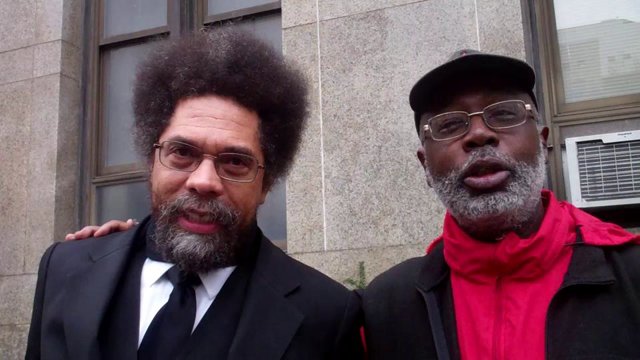
EMERGENCY
The Police Are STILL Killing Unarmed People and This Must STOP!
A CALL TO ACT
COME HEAR CORNEL WEST AND CARL DIX SPEAK ON APRIL 6 about what needs to be done and massive outpourings on April 14.
Monday, April 6 at 7 PM
New York City
St. Paul & St. Andrews Church
West 86th Street & West End Avenue
At times, knots of students would gather. In one case, a fierce debate broke out when a backwards student was outraged that someone agitating had compared the police to the Ku Klux Klan. Two other students—one who had planned to join us and one who got drawn in on the spot—argued with him for over half an hour, becoming stronger in their arguments and getting actually a bond between them and with us as they did. At other times, deep engagement broke out over what it will take to end the epidemic of murder by police: whether reforms are enough or whether revolution is necessary, what difference the protests of last fall and the protests being planned now will make, and how to go about organizing on their campus. Quite a few who stopped had been at the Dialogue last November between Cornel West and Bob Avakian on Revolution and Religion; The Fight for Emancipation and the Role of Religion, most remembering it very fondly and sharing the deep thinking, feelings, and questions it had provoked.
Later, two mothers whose sons were killed by police came out to stand with us. They courageously shared their stories with all who would stop to listen and together they had an enormous impact on students, university workers, and everyone else who was part of the team.
Across the country, groups of revolutionaries, freedom fighters, loved ones of police murder, and students—both individually and collectively—were doing something similar. At one city university, a young woman planned to make announcements in two classes. At an art school, a student planned to safety-pin the April 14 poster to his back and wear it all day. Reports on how this and the many different kinds of actions planned went are still coming in. At another city university, where I had recently spoken in several classes, a group of students teamed up after their midterm and traveled the halls and main spots of campus, challenging their peers to join them in posing with the Stolen Lives Poster. One revolutionary joined them to bring materials and stand with them, and by the end of the day the students had set up their own Facebook group promoting #ShutDownA14 on their campus which proudly displayed their new photos. Down south, a group of high school students spread the stickers and snapped pictures all day which they spread through Snapchat.
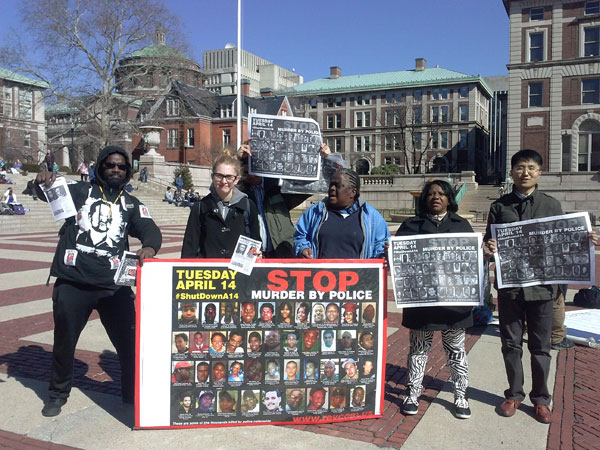
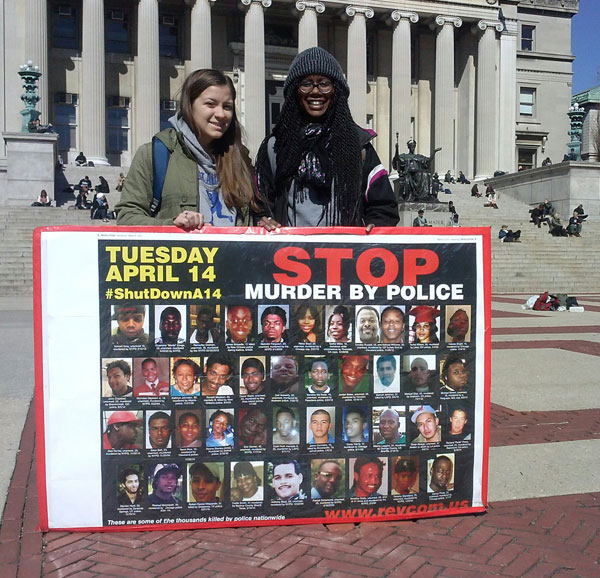
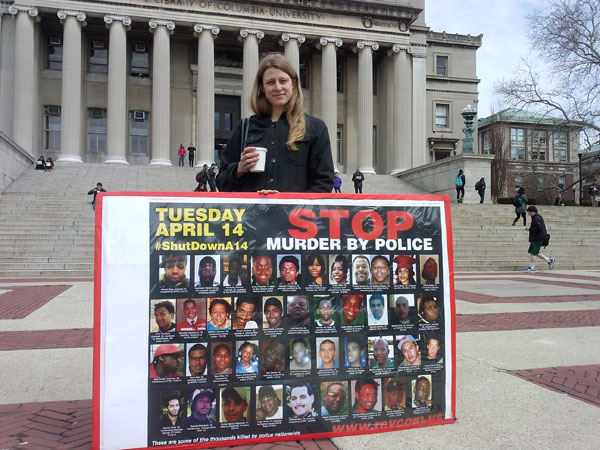


The Stolen Lives Days are a critical nodal point in building for the massive protests and disruptions that have been called for April 14 (#ShutDownA14) to STOP murder by police—and to get the word out about the Emergency event on April 6 with Carl Dix and Cornel West. These days were conceived of as a way to put before thousands of students the vivid reality of the epidemic of police murder, to challenge—and give a concrete and simple form for—students to take a stand against this, and to provide a means for students and others who are stepping forward for the first time to learn to work together, build confidence and organization. Simply take out the Stolen Lives poster and challenge others to take a picture of themselves with it and spread it on their own social media with the hashtag #ShutDownA14.
In summing up the first day, there are many things that stand out. For one thing, despite the widespread feeling that has been promoted in the media and elsewhere that people have “moved on,” there is still widespread concern, agonizing, and deeply felt outrage at what is being done to Black and Brown people at the hands of the police and the criminal in-justice system. But at the same time, many of those who are feeling the most strongly have no experience stepping out and to lead and organize others. Even many of those who took part in the protests last fall, even some who were arrested and did incredibly bold things, had mainly just been moved along by the wave of outrage and outpourings. What they did was righteous, but many have no experience organizing others—especially not when others seem to have gone back to their “regular lives.”
One young white student stopped for a long time to talk and help out. When I asked him why he stopped, he looked genuinely puzzled. “What could be more important?” he asked. He agreed vigorously that society needs to be shut down, including his school. But, when he learned that there were no concrete plans yet on his campus, he said he said he couldn't see himself as the main “point-person.” This sentiment was repeated, but by a significant minority of students of all nationalities.
A particular challenge that must be taken up right now, very systematically and very urgently by people building for #ShutDownA14, is identifying and helping these loose individuals begin to find each other, learn to work together, and become real cores of people working together to lead other students to act on A14. People need the experience of working together, of learning that others will have their backs, of knowing that if they can't make the whole argument someone else can throw in what they know and they can all learn together. They need to feel less isolated when they stand out and challenge their peers.
While it would be wrong to conclude that this is the only way people can step forward, and while I know only a small fraction of what went on so far across the country thus far, it is worth noting that at two places where groups of students took this up on their own, some of them have been friends for a long time. They knew each other and felt comfortable and more confident together. Even in these cases, organizers (myself and others) spent a lot of time with them, speaking frankly about the families who are and will be shattered if we do not challenge this generation to stand up and fight back. We talked through why it is right for them to call up the other students and challenge them to get involved. We reminded them this wasn't “personal,” they weren't calling on others as some kind of “favor.” Everyone is responsible for stopping this horrific and slow genocide and they are righteous for what they are doing. And then we talked through concretely the steps they need to take to bring people together around this.
What I am trying to highlight is the work that is required with those students who really do feel strongly to give them the confidence and the concrete forms they can take up to start working together on this. While we must continue to go out very broadly and very boldly to many more, we need to pay special attention to working with – and bringing together—those individuals who feel most strongly about this. Where they are not already friends (in most cases), this requires even more conscious attention from us. Today, when we are out, we plan to take some time to bring the students we have met together, to sit down and meet each other and strategize over how they can take some collective steps to build for and plan actions for April 14.
Key in all this is the April 6 event, EMERGENCY! The Police Are STILL Killing Unarmed People—This Must Stop, A Call to Act, with Carl Dix and Cornel West. This will be a chance for people to come together en masse to hear two incredible freedom fighters lay bare the situation we face, the challenge before us, and the concrete forms for us to take up and struggle to win. Getting cores of students mobilizing together for this and bringing a wave of students to this—or to gather to view it all over the country—is going to be critical. The more people get this powerful message, and the more they experience it together, the more they will be able to go out immediately in the one week that will remain to make April 14 a powerful, society-shaking event. And, the experience that these beginning cores have going in to the 6th—including through the Stolen Lives Days as well as through building for the 6th itself—will make all the difference in being able to carry forward the energy, clarity, and determination that gets forged through this program.
My final observation, for now, about the first Stolen Lives Day, was that it was very difficult to end the day. Not only was it was difficult to tear ourselves away from the campus precisely because of what we were beginning to open up. It was even more difficult to walk down the street in Manhattan to where we were dropping off the huge enlargement of the Stolen Lives poster. In carrying the poster literally one and a half blocks from the train to where we were storing it, I was stopped repeatedly by people who wanted to take its picture. “No,” I would tell them, “You have to hold it up and I will take your picture with your camera.” As soon as the first man posed in this way, others starting coming up and taking pictures and a small crowd gathered. Before I could finish the first photo, a man was shoving his phone/camera in my hand, and insisting, “I'm next!” For ten minutes I stood on the corner, snapping pictures of this one and that one while others stopped briefly and snapped pictures of their own. A little further down the street, the same scene broke out a second time; a group of guys on the job—doing construction—stopped briefly to take their pictures. Almost all these people were Black and Latino, they put their fists up, took fliers, gave their phone numbers, and more. This is just a small taste of the depth of feeling that exists right now, and this, too, is something we have to bring to the students. These students have a responsibility not to allow those who suffer the worst brunt of this police terror to stand alone. Even if their peers aren't all as passionate as them, even if the anger isn't as openly on the surface on the campuses as it is on the average urban street corner, it is there and they have a responsibility to manifest it and bring more forward.
Besides sharing this experience with them, one extremely powerful tool in conveying this and inspiring students to act on this responsibility, is the Message to Students and Youth of ALL Nationalities that came from an ex-prisoner and current emancipator of humanity. This should be printed off, distributed broadly on the campuses, and gotten into deeply with the cores who are beginning to step forward. And, finally, they should ALL be turned on to www.revcom.us where this—and so much more leadership and understanding—is being provided every single day.
Volunteers Needed... for revcom.us and Revolution
If you like this article, subscribe, donate to and sustain Revolution newspaper.

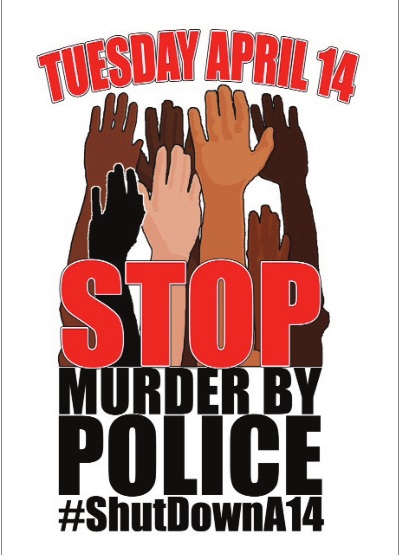 Find out more and get involved
Find out more and get involved